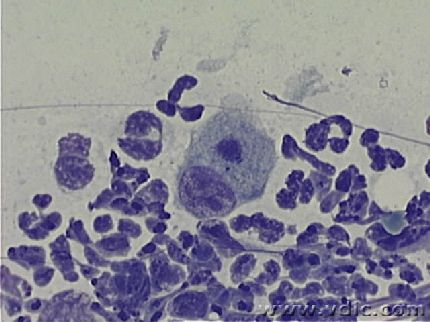Primary invasive liver abscess syndrome was recognized in Asia for more than 20years, almost 1000reported presentation published in 2008, it has been reported rarely in other regions. K. pneumonia
infection accounts for more than 80% of primary liver abscess, reported from Taiwan in 1990. Most cases were seen outside of Asia, especially among patients Asian ethnicity, including the United States. ,
He rarely reported in Australia so far. ,
Interesting no previous hepatobiliary disease, the relationship of diabetes and risk of metastasis. Unsafe KPLA was associated with severe metastatic complications, including endoftalmitu. as a leading cause of purulent abscess liver unclear, although selective pressure >> << through the widespread use of amoxicillin, to which it is almost universally resistant, was postulated. Genetic predisposition may have given the disease is seen almost exclusively in patients of Asian origin, even outside of Asia, and very rarely in those origin Caucasus. , K.
pneumonia often occurs as part of normal fecal flora and spread to the liver is believed to originate from the intestine via the portal. Typically, any bacteria reaching the liver is then fahotsytuvaty and killed, and the failure of this protection is supposed to lead to the formation of abscesses of liver. Diabetes is present in 50% to 70% of patients reported from Taiwan

possibly conferring susceptibility violation of neutrophils mediated defense
and it also seems to be a risk factor for complications of metastases. Interestingly, none of the patients in our strattera dosage small sample of patients with diabetes. Bacterial virulence also is important because the state often affects previously healthy individuals. The presence of capsular polysaccharides
K. pneumonia serotype K1or K2has was closely associated with virulence to resistance to phagocytosis,
our patients were infected with one of these two serotypes. Typically, K
pneumonia strains causing liver abscess is hypermucoviscous, as determined by an unusual, very slimy colony appearance on culture, the function is closely related to K1or K2serotype. This property is the basis of line test that can be easily in a laboratory. Line test quickly, useful research in this situation (
). Colony, which stretches more than 5 mm using a standard cycle of vaccination gives a positive result on hypermucovisosity. K. pneumonia
selects from Taiwan were much more likely to have hypermucoviscous phenotype and are K1or K2serotypes, than in other countries, except South Africa where invasive disease is also considered. Indeed, with many
K. pneumonia serotypes capsule isolated from patients in Australian tertiary hospitals settings, K1and K2accounted only 10of 293 (3. 5%), presentation. All of our patients recently in Asia, which increases the probability of impact of these strains of the organism. However, reports in the U.S. were associated with immigrants from Vietnam and Korea, who had traveled home for several years. Third generation cephalosporins such as ceftriaxone is usually effective treatment, with good penetration of vitreous fluid and cerebrospinal fluid that optimizes metastatic lesions in these areas. If endoftalmitu, systemic antibiotics should be combined with intravitreal injection. Treatment need for clinical status, biochemistry and radiology indicate permission, often requiring antibiotics 4to 6weeks. Another mainstay treatment computed tomography or ultrasound under the control of percutaneous drainage of abscess. Surgical drainage may be necessary during percutaneous methods have failed, as in our patients 3 and 4. Metastasis is extremely difficult KPLA, reports from Taiwan to assess the frequency of between 3. 5% and 20%. ,
Endoftalmitu, lung abscesses and meningitis are more common complications. Ophthalmic and other agencies review is shown in KPLA diagnosis. Visual recovery in patients with endoftalmitu often poor, a high index of suspicion and early intervention, before visual changes noted may improve outcome. Reply to antibiotics and drainage is generally good. In contrast, patients with concomitant diseases of biliary tract, long-term relapse in patients with liver abscess arise spontaneously are low. K. pneumonia
liver abscesses, Australian physicians should consider this condition, including, but not exclusively, in patients of Asian descent with abdominal infection or whose cultures reveal this organism. In these conditions hypermucoviscous isolate
K. pneumonia may belong to serotype K1or K2, and be associated with metastatic infections, especially endoftalmitu, lung abscess and meningitis. .
No comments:
Post a Comment